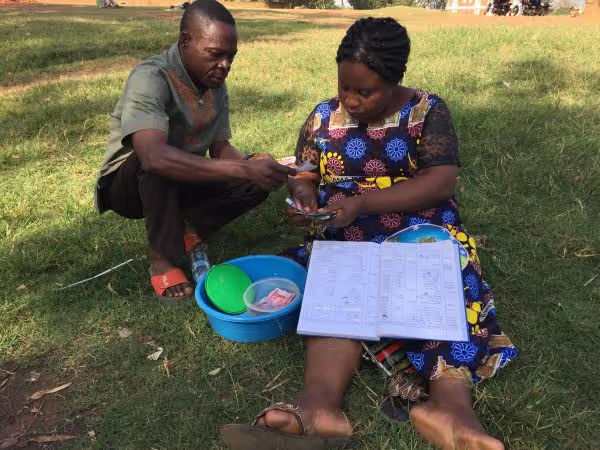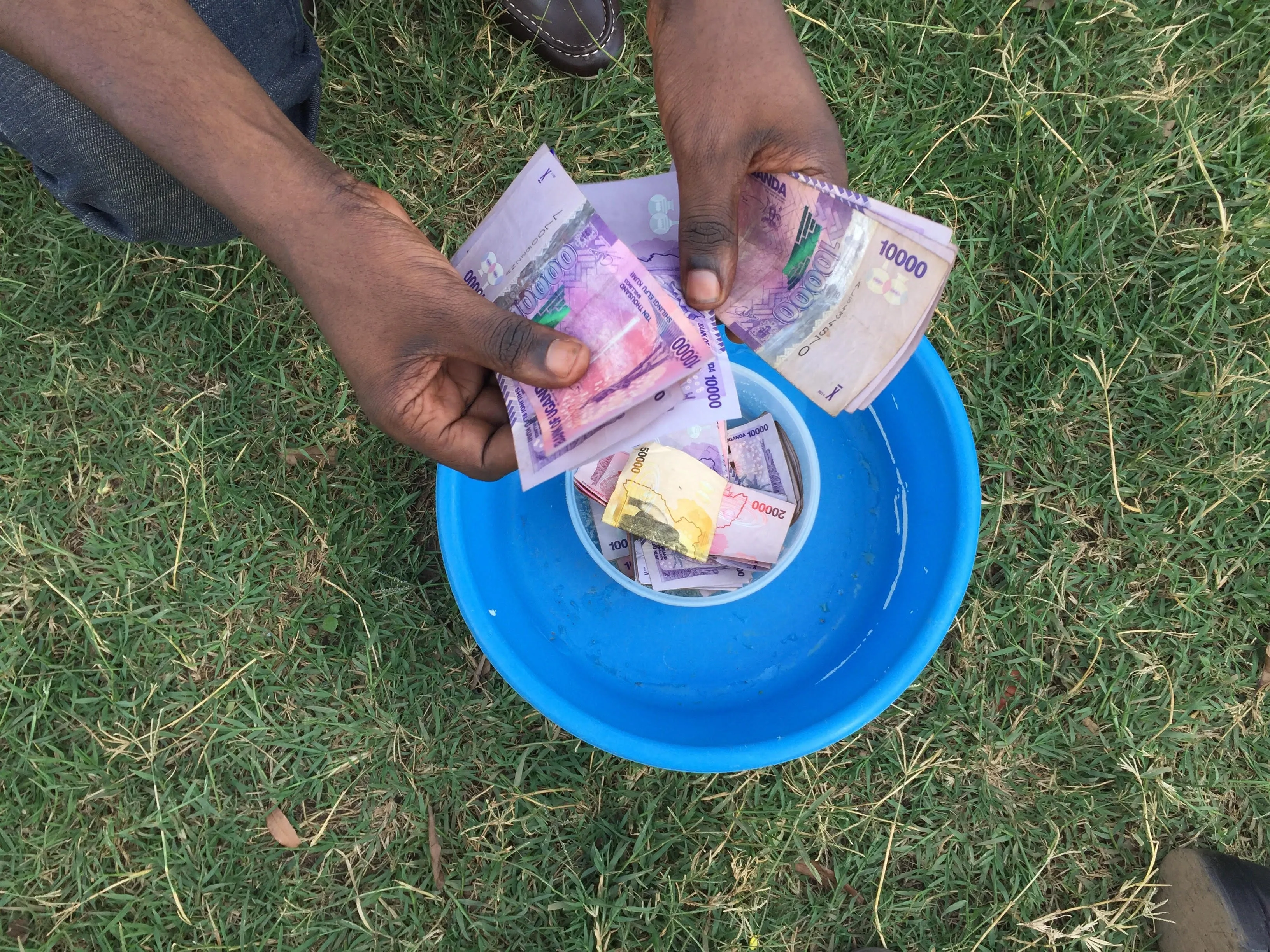Interview with Robert Hakiza from YARID

Robert Hazika from YARID discusses the concept of refugee run micro-finance. He is enthusiastic about the many benefits of these kind of loans, but acknowledges that there are also challenges. Read the interview below to find out what he has learnt through the course of this project.
The project and importance of providing loans
Can you summarise your project in 30 seconds and tell us what the main findings of your research were?
Refugees receive very little financial support which can lead to businesses struggling or collapsing as they can’t access capital. Our idea started with a question: how can we help refugees to access finance? We conducted research with refugee communities and found that the majority of refugee run microfinancing is successful due to the low repayment rates and flexibility on repayment deadlines.
How did this project come about?
We have been working with refugees in Kampala for nine years and one of the conditions of free movement by the Ugandan government is that refugees must be able to support themselves. This project started through a desire to understand the challenges faced by refugees in accessing micro-finance loans. The project identified 30 savings groups and looked at how they operate and which financial tools were available to them.
How does the innovation look on the ground/from a user perspective?That is, if I were looking to get a loan within this community what would I need to do? What is the process to get a loan and for repayment? What criteria would I need to meet?
Typically between 20 and 30 friends or family members come together to create savings groups that are often comprised of a mix of nationalities and local Ugandans, which has been important for community cohesion. Every member saves a certain amount every week because individuals’ incomes vary they will save a minimum of 5 thousand to 30 thousand UGX per week. They meet every week to pool savings and make loans to members from the pooled saving. The amount each member is eligible to borrow is based on the amount contributed. At each meeting members are asked if they want a loan then a priority list is created. Repayment rates are much lower than those of micro-finance institutions, eg 10%. On average loans last one to two months but no more than three months.
The challenge of this model is that once two to three people have borrowed there isn’t enough money available to lend.
Can you withdraw your savings at any time?
Not unless it is agreed upon by the group leader, other members, and is permitted by the group’s constitution. Groups have a set loan cycle, which is usually 12 months. At the end of the cycle everyone receives their savings plus interest, and can decide whether to start a new group.
What criteria are in place to avoid everyone asking to withdraw savings at the same time?
Groups are very transparent and well-organised – members only join if they fully understand the savings rules, and every group has a constitution. If someone had an emergency and needed their savings, there would be a group discussion about this.
Why are the rates of failure in paying back loans so low?
Late repayments are common but there are very few instances of default on a loan. This is because all members have a business or job so they always have an income late payments are often caused by slow business. Also one of the most important reasons is that groups are created of members who trust and like each other – if they don’t repay a loan, they know they are hurting other group members.
What are loans usually needed for?
The majority of refugees are involved in small, informal businesses. These are often based on nationality eg the Congolese focus on jewellery. Another example is second hand shoes and clothes. While these businesses do well in providing a stable income and money for food and rent they are often unable to grow or provide stability during difficult times, and sometimes collapse due to a lack of capital for investment.
How did you involve and engage the project beneficiaries?
Most members of the groups are people we know well through our organisation.
Can you give us an example of a partnership between refugee-run savings’ groups and outside actors?
One refugee saving group called UAPD started partnering with a micro-finance institution called FINCA. There were many levels of financing which had different criteria attached to them, it was successful and the group was growing daily. However, this growth caused the bank to ask a lot of questions the fear was that refugees would disappear with the money so the bank required them to have a level of collateral to secure loans that they could not comply with.

The Challenges and Lessons Learnt
What are the key challenges for refugee-run micro-finance initiatives?
The key challenge is lack of capital. Groups want to offer larger loans but the main problem is that the capital comes from other group members, who are usually very poor. There is also a lack of financial literacy, which means that their initiatives may not be as efficient as they could be. Another issue is the lack of safe spaces to meet they cannot meet at members’ homes because their homes are not large enough to accommodate a group 20-30 people.
In what ways do they mitigate the risk of robbery?
They have safe boxes with a big padlock and they keep the box in a different place to the key.
What challenges did your project face?
People had so many expectations! These groups have been operating here for years on their own so when we wanted to research how they worked they thought that either we wanted money or we were going to give them money. We had to explain carefully the purpose of the project. We explained that we are coming together as part of the community to overcome the challenges to accessing finance and if we fail we fail together and if we succeed we succeed together!
Was there anything unexpected that you learnt, or a use for your project you didn’t expect?
I didn’t expect to learn that most of the members of these savings groups were reliant on them for their businesses. I didn’t realise how important they would be.
Can you talk us through the model of micro-finance initiatives you have developed as a result of this research?
We looked mostly at the challenges in terms of accessing capital and skills to run micro-finance initiatives but also having additional livelihood training to help them run businesses which will in turn help the group to make repayments. Our proposed model will see YARID partner with BRAC in the short term. BRAC will provide additional capital and training to YARID staff who will then continue this work.
- Year 1 will focus on training.
- Year 2 will focus on accessing more capital.
How will it be sustainably financed?
YARID will need to source permanent funding in order to continue providing the training because there are always new refugee groups that need support. If YARID receives an amount of capital to loan to different savings groups (through a micro-finance institution or another entity), this could be a sustainable option.
When a group receives funding from BRAC who has the responsibility to repay – the group or the individual who takes out a loan?
The group is responsible for repayment so the risk is spread out.
What are the next steps for your project?
YARID has applied for a HIF Development Grant to further research and pilot our model. We want to research the best micro-finance institutions to partner with (like BRAC) and then implement a partnership with 25 of the most successful saving groups, which we identified in our first HIF funded project. YARID is trusted in the community so refugee saving groups do not worry about borrowing money from us. We want to train our staff in micro-finance with technical advice from a micro-finance institution and then offer financial literacy trainings and loans to refugee-led micro-finance groups to help them lend their members larger amounts of money.
If someone wanted to carry out research or a project similar to yours, what would be your advice?
There is need for more research in this area to see how refugees are managing elsewhere because the challenges refugees face in Uganda are different to other geographical locations.
How have you found working with the HIF?
A very good experience - it hasn’t just been funding there has been a good level of project support! We managed to run YARID for 5 years without a donor and we didn’t expect a big donor like the HIF would be interested in supporting us.
Feature Photo: A member of Tumaini saving group logging the amount of money saved by the group. Credit: YARID.
Stay updated
Sign up for our newsletter to receive regular updates on resources, news, and insights like this. Don’t miss out on important information that can help you stay informed and engaged.
Related articles
.png)


Explore Elrha
Learn more about our mission, the organisations we support, and the resources we provide to drive research and innovation in humanitarian response.